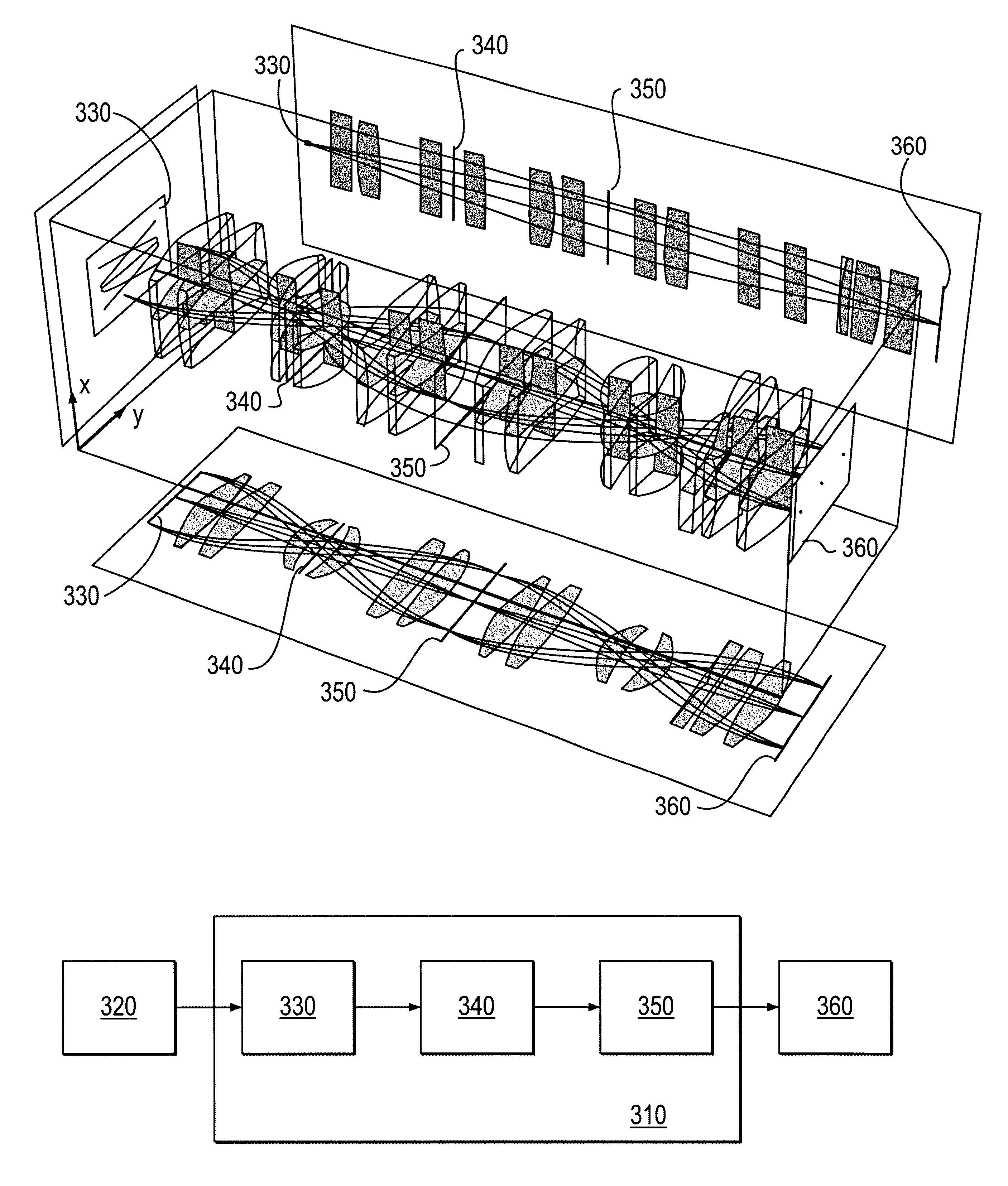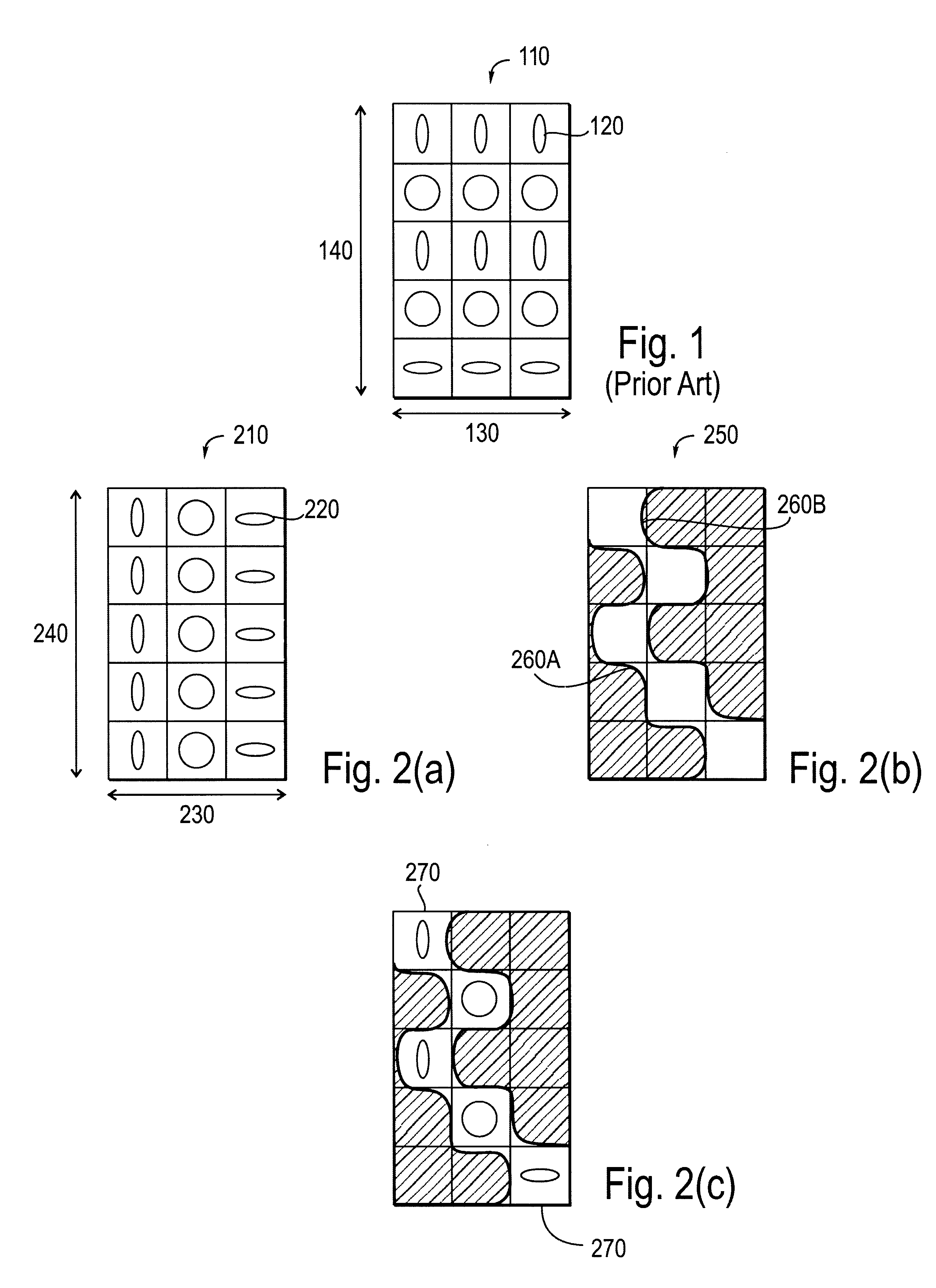Adjustment of the partial coherence of the light energy in an imaging system
a technology of partial coherence and imaging system, which is applied in the direction of photomechanical equipment, instruments, printing, etc., can solve the problems of increasing the portion of the overall cd error budget consumed by within-field cd variability, increasing the proportion and increasing the cd error budget of the overall cd error budg
- Summary
- Abstract
- Description
- Claims
- Application Information
AI Technical Summary
Problems solved by technology
Method used
Image
Examples
first embodiment
In the present invention, horizontal-vertical (H-V) bias along the direction of a slit is reduced by using an array 210, as shown in FIG. 2(a), in conjunction with an aperture 250 with articulated edges 260A and 260B, as shown in FIG. 2(b). H-V bias refers to CD variability between two orthogonal directions, in particular, the horizontal direction and the vertical direction. H-V bias varies as a function of pitch. Pitch is the periodicity in a pattern of regularly-repeating features. H-V bias may be caused by aberrations in the projection optics or non-uniformity in partial coherence of the illumination. One kind of optical aberration is astigmatism, which causes H-V bias that is very sensitive to focus. Another kind of optical aberration is coma, which causes H-V bias that is not appreciably sensitive to focus.
The array 210 is substantially planar with a first dimension 230 and a second dimension 240 that are orthogonal to each other. When a step-and-scan type of imaging tool is us...
PUM
| Property | Measurement | Unit |
|---|---|---|
| optical aberrations | aaaaa | aaaaa |
| light energy | aaaaa | aaaaa |
| channel lengths | aaaaa | aaaaa |
Abstract
Description
Claims
Application Information
 Login to View More
Login to View More - R&D
- Intellectual Property
- Life Sciences
- Materials
- Tech Scout
- Unparalleled Data Quality
- Higher Quality Content
- 60% Fewer Hallucinations
Browse by: Latest US Patents, China's latest patents, Technical Efficacy Thesaurus, Application Domain, Technology Topic, Popular Technical Reports.
© 2025 PatSnap. All rights reserved.Legal|Privacy policy|Modern Slavery Act Transparency Statement|Sitemap|About US| Contact US: help@patsnap.com



